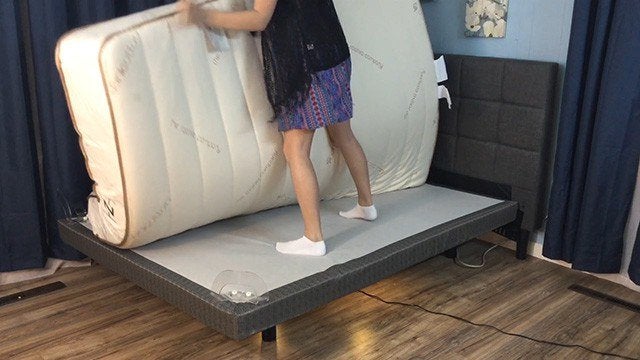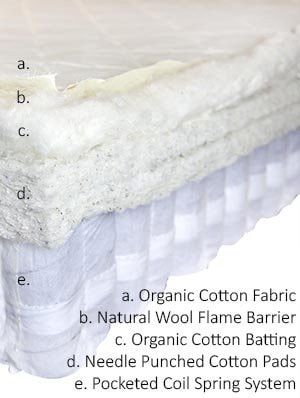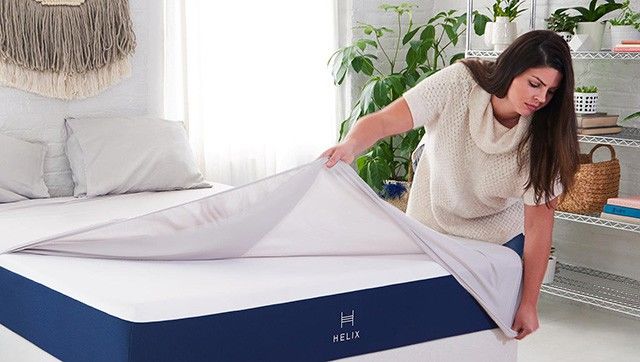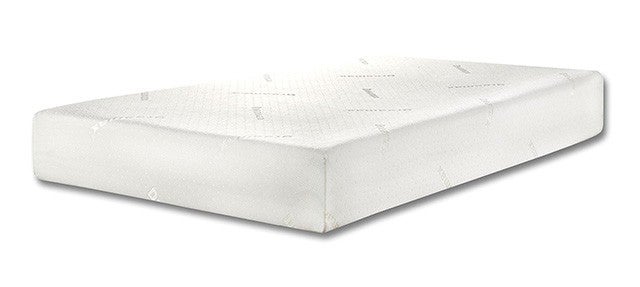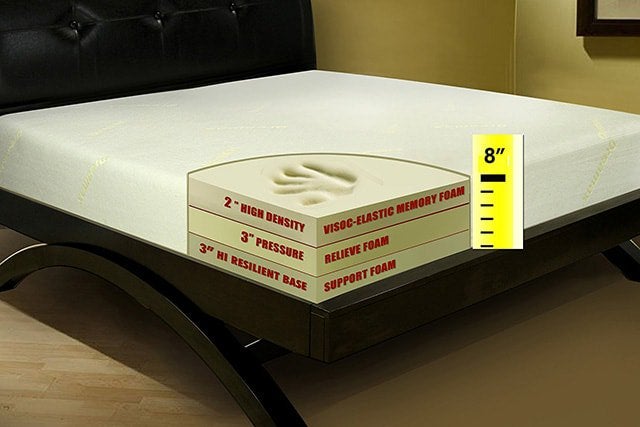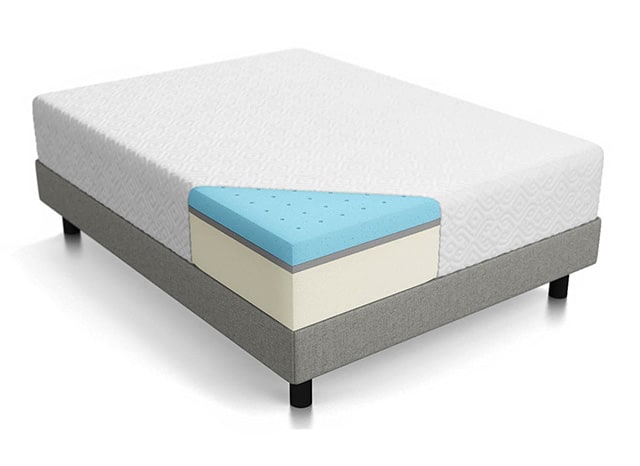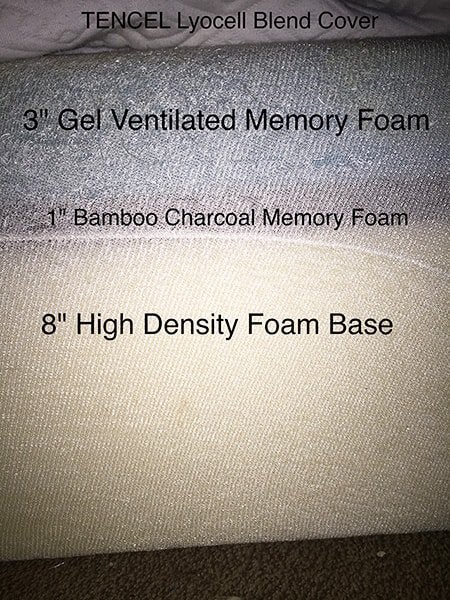It used to be that the majority of mattresses required regular flipping and turning to provide even wear and comfort through your ownership of the product. Mattresses that weren’t maintained this way would often begin to break down and sag, or create indentations in your sleeping surface. Mattress care is a necessity to keep it as comfortable as the day you bought it, so making an effort to flip, or not, depending on what you own, is well worth the effort.
With the introduction of newer materials and hybrid mattress construction, this part of mattress ownership has begun to fall by the wayside and is rarely even possible any more. There are some pros and cons to this, such as not having to lift a heavy, bulky, and often awkward mattress and try to move it every few months. But on the flip side (excuse the pun) you also only have one surface to take on your weight and nocturnal movements, which may begin to wear on the overall construction faster than you expect.
If you have fallen in love with a particular mattress, but are unsure of what it is exactly, and its maintenance needs- then read on to determine exactly what you can do to keep your mattress feeling like new for years to come.
What Mattresses Should I Flip?
Flippable mattresses are going to have the additional maintenance of flipping once a month or every few months to real the full benefits of the construction design. These are often innerspring, or innerspring hybrid designs (which combine coil and foam comforts) and often only have a few comfort designs available. What is popular about them is their longevity and longer lasting comfort. This also often comes with a higher price tag as well.
Flipping your mattress comes with many perks however. To start, you are more eveningly distributing weight over the entirely of the mattress, and allowing the materials to settle, and decompress, after nights of supporting your sleeping weight. This helps to avoid a center of the bed sink, one sided sink, and body impressions and keeps you sleeping more comfortably for longer.
The Pros and Cons
Pros
- Allows used areas to settle
- More even wear over life of the mattress
- Mattress will last longer
Cons
- Heavy and awkward
- May be impossible to do alone
- Often more expensive
Materials
As mentioned most mattresses that require flipping contain an innerspring, coiled construction surrounded by layered cotton and occasionally foam padding. Innerspring designs aren’t all the same, and depending on the build you may be faced with a continuous coil system that allows the coils to distribute weight by reacting to one another, or a pocketed coils system, which allows the coils to move independently from one another to better distribute the varying weight and pressure points of your body.
The layers of cotton, or cotton/wool combinations (with the occasional thin, foam layer), help provide breathability, cushioning, and coil support, which is needed to support the overall construction that allows for flipping. They also often have a thin, quilted pillow top support made from cotton and poly fill.
Construction
The construction of flippable mattresses requires that both sides of the mattress be mirror images of one another. Because of this you have a layered construction where the overall support of the bed is found in the center as a coil innerspring with both sides equally cushioned by a few inches of firm cotton, or cotton/wool padding.
The reason most flippable mattresses are of a firm construction is because the innerspring does complete the majority of weight distribution, and needs to be sturdy enough to hold up years of compression and weight shifting equally on both sides.
As mentioned above, many of these mattresses also have a thin pillowtop to provide a bit of a plush surface to better distribute pressure points and allow for a wider variety of sleep positions. These mattresses also require a boxspring support to help distribute weight, and allow the ‘flipped’ side of the bed to rest properly without pressure. These are often also an overall thinner mattress since two sides of the bed is distributing the weight, rather than just one, although with the boxspring you still have a higher profile bed height.
Maintenance
Most double sided mattresses require flipping and rotating (all mattress should be rotated as well for even weight distribution) every 4 to 12 weeks depending on the manufacturer suggestions. No matter how often you do it, as long as you are consistent in its maintenance you will get the proper wear over the life of the bed.
Concerns
The biggest concerns surrounding a flip design, is the difficulty in flipping and rotating for proper maintenance. Mattresses, even low profile choices, are awkward and require room to turn and place. This may be an impossible task for only one person to complete, especially for larger sized beds.
You may also run into the difficulty of a narrow room space, or low profile ceilings or ceiling fans. When this occurs you may actually have to take the mattress from the room into a larger space before flipping it over and placing it back on your bed.
These beds may also occasionally be priced higher because of the additional construction that goes into them, as well as less overall material and surface comfort choices.
What Mattresses are Non-Flip?
No-Flip mattresses are definitely the more common mattress currently found in the sleep industry. Not only do you get a wider variety of choices to pick from, but you are also offered a much larger salvation of surface comforts to fit your unique sleep needs. These mattresses can be built from any material and may include thick pillow or Euro-tops for additional comforts. They also don’t always require a boxspring, and can be used with platform styles beds- which also often makes them a little more affordable than their flipable counterparts.
The Pros and Cons
Pros
- Larger selection of mattresses to choose from
- No schedule to remember
- No heavy lifting
Cons
- May not last as long
- Uneven wear may begin to show
- Additional mattress topper costs may occur
Materials
No-Flip mattress materials are as widely varied as their comfort options. They may include innerspring designs, all layered foams that include poly, memory, and latex choices, as well as quilted cottons and wool paddings.
Although I explained innerspring designs above, foam/innerspring hybrids, as well as all foam designs are rather popular in choice due to how layered construction properties can provide many different surface firmness values. Memory and latex foams are the most popular surface comfort choices and are not often used in flippable mattress designs due to the lack of support offered for them when used with a box spring.
Memory foam is popular due to how it conforms to your unique body weight, shape, and heat to provide contouring and sink. Latex is popular due to its similar give, but more springy texture- although both provide increased weight distribution and pressure point relief.
Thick pillowtops and Euro-tops are also more often found in non-flip mattress designs to add additional comfort, especially in supportive, firm mattress choices that also need an additional layer of soft relief.
Construction
No matter whether the mattress is of innerspring or foam construction, one-sided mattresses are all built in layers from the bottom up. The bottom layer, or layers, typically are of an overall supportive coil or poly foam system that provides both a foundational base, as well as overall shaping of the mattress. The top layers are generally comprised of one or two thinner layers that work with one another to provide the overall comfort relating to firmness levels. This is where you’ll find your higher quality latex or memory foams- directly where you can feel them the most.
These top layers are also what provides the many different sleep surface comforts that you can choose from. Very soft to very firm choices are more readily available, with every type of comfort found in between. These are often thicker mattress profiles due to having to provide support and comfort all on one side that will hold up over years of use with only regular rotating to help keep weight distribution more even over the life of the mattress.
Maintenance
Obviously the maintenance of one-sided mattresses are much less than those you need to flip, but they still require a degree of movement every 2 to 4 months to avoid uneven wear and tear. Even though many companies will say that you don’t have to rotate your mattress, doing so regardless of their suggestions provides very obvious results.
To start, rotating your mattress keep body impressions from your sleep weight from forming too quickly, and also allows one side of your bed to rest, especially if you are a single sleeper. Some mattresses even come with a rotation schedule suggestion stitched onto the surface of the bed itself to help remind you.
Concerns
Even though you don’t have as much maintenance as a flipped mattress, you still need to lift, and turn your mattress if you want to get the most out of it during your ownership. This is often difficult to do, although you are not as constructed by low ceilings and the like as you are with having to flip a mattress. Many of these mattresses are often larger, and heavier than their flipable counterparts, and so even a rotation can become problematic to just one person.
Another concern surrounds the fact that it has become common in one-sided mattress warranties to include that a degree of material compression is acceptable. The idea behind a flippable mattress was to avoid material compression to provide a more even sleep surface, but non-flip mattresses are expected to compress as part of their ‘breaking-in’ over time and is associated with your overall sleep comfort. This calls for a mattress that doesn’t always last as long as their must flip counterpart.
What Is a Layered Mattress?
Although the layered mattress isn’t as readily available as those described above, they do include an ingenious design that incorporates the best of both to create a customizable sleep surface. There is a degree of maintenance required, as described below, and are incredibly popular with the consumers who have discovered them due to how customizable they are to your sleep comfort.
The Pros and Cons
Pros
- Provides even wear
- Fully customizable
- Flipping doesn’t have to occur as often
Cons
- May be awkward and heavy
- Flipping is required for full benefits
- May not be able to flip it alone
Materials
Like the one sided mattresses, layered mattress can be made up of a variety of different materials and include both innerspring or foam choices for overall shaping and support, as well as foam, cotton, and wool comfort layers.
Construction
The construction of a layered mattress is what makes it stand out amongst all other mattress choices. This is a unique design that provides, literally, two disconnected layers that you maintain separately to keep a comfortable, long-lasting sleep surface that is often devoid of body impressions and contouring sinks.
Your top layer is basically a very thick pillow top like construction usually made up of memory or latex foam and cotton comfort layers. This is the surface that will contour to your body, help distribute weight throughout the rest of the mattress, and cushions your pressure points. This layer can be easily customized to your comfort levels, and also can be changed out to meet any changing needs you may have through the years.
The base layer can be of sturdy foam or innerspring construction upon which the top later rests. The top layer typically connects to this layer via a zipper, or similar stabilization system. Companies that create this type of bed do so because they feel that foundational support and comfort layers should be treated differently to provide the proper rest, as well as the best bang for your buck.
Maintenance
Because of the unique construction, layered beds do require proper maintenance to get the most out of it, but they are constructed in such a manner to make it as simple as possible. The top layer should be flipped and rotated regularly. When you change your sheets you should also flip and rotate your comfort layer to avoid a breakdown in materials, and less incidence of lasting impressions.
The base layer should also be flipped and rotated since it takes up the bulk of your weight and provides overall body stability. This should be done quarterly for innerspring designs, or at least once every six months for foam designs. Of course, manufacturer directions should be followed concerning this as well.
Concerns
Obviously having to flip the heavier foundation may become somewhat problematic simple due to size and awkwardness. Although this doesn’t have to occur as often as a traditional two-sided design, it does have to happen. People may also find having to flip and rotate the surface layer annoying as well, although the added comfort benefits may be well worth the added chore.
Layered mattresses can also be a bit more expensive simply due to the very customizable process that goes into it. Plus you can have more than one surface to use (although the perk of this may be that you get a longer mattress life overall for less cost since you wouldn’t have to replace the entire thing).
Conclusion
If you are currently shopping for a new mattress, or simply exploring your options, know that there are many out there that utilize many materials and design construction to help meet your particular needs. Traditional flip mattresses are often more firm in nature, but often longer lasting and can be tempered with a quality mattress topper or pad. Non-flip designs provide a greater choice of comfort and construction design, but may not last quit as long (although they may be more affordable). Layered mattresses are highly customizable, but do require specific maintenance care over time.
No matter your preference, they do all require a degree of maintenance to get the most out of your sleeping surface and extend the life of your bed. Hopefully this has been a simple, but comprehensive breakdown of the choices available to you for a good night’s sleep. We welcome any questions or comments you may have, and would love to hear of your personal experience with any of the above mattress types!
